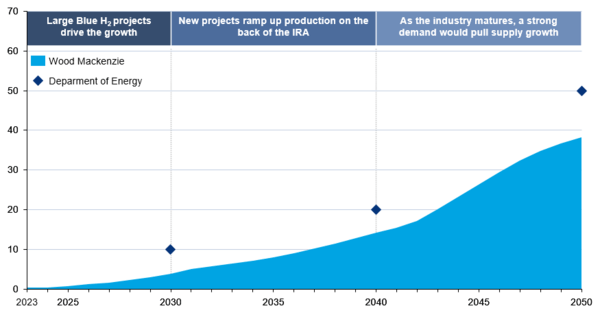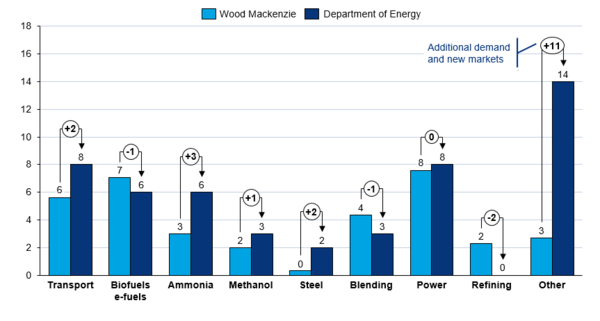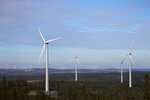News Release from Wood Mackenzie Ltd
Wind Industry Profile of
U.S. and Japan will struggle to hit ambitious hydrogen targets
U.S. Hydrogen producers will struggle to hit the National Clean Hydrogen Strategy and Roadmap (the Strategy) that was released by the Department of Energy on June 5 according to according to analysts Wood Mackenzie, the leading provider of decision intelligence for the world’s natural resources sector.
In a note to clients, Principal Analyst Hector Arreola, said that the Strategy lays a clear trajectory for achieving low-carbon hydrogen production milestones of 10 million metric tons per annum (Mtpa) by 2030, 20 Mtpa by 2040, and 50 Mtpa by 2050. However, she added that despite these efforts, the market has yet to move at the necessary pace to fully capitalize on the production potential outlined in the Strategy.
“Several factors make meeting these production targets unlikely,” Mr. Arreola says. “Renewable power costs, electrolyser load factor, and a slower decline in capital expenditures for electrolytic hydrogen (which is projected to be around US$1,600/kW in 2030) are all serious headwinds for potential new production.
Figure 1. US low-carbon hydrogen supply

Source: Wood Mackenzie
Mr. Arreola added that other factors such as temporal matching, geo-location, and additionality in carbon intensity calculations could substantially impact the level of production subsidies and, consequently, the adoption rate.
The client note added that Wood Mackenzie research agreed that the Strategy was correct in identifying the importance that sectors such as ammonia, power, and biofuels/e-fuels as being critical to long-term clean hydrogen adoption.
“The level of penetration on each end-use in the U.S. is uncertain and will vary widely due to market forces, decarbonization alternatives, policy support, and go-to-market cost,” Mr. Arreola said.
Figure 2. US estimates of potential low-carbon hydrogen demand by sector in 2050

Source: Wood Mackenzie
Japan strategy aims high
Japan also announced the 2nd Basic Hydrogen Strategy (the Japan Strategy) in June which looks to increase domestic hydrogen production tenfold between now and 2030. The Japan Strategy will look to support hydrogen and ammonia production increasing to 3 Mtpa by 2030 by addressing some of the key challenges facing the industry around high costs, lagging demand, lack of infrastructure development, and carbon intensity standardisation.
Japan plans to introduce a hydrogen subsidy scheme to bridge the cost gap between the high cost of low-carbon hydrogen and the fuel or feedstock it is trying to displace, but it contains no details on the level of subsidy that is being offered.
“If Japan intends to attract imports, it must offer something on par with the US [$3/kgH2) and the EU (€4/kgH2),” says Principal Analyst Flor De la Cruz. “However, it is unclear if the target is for domestic production or global supply by Japanese affiliated companies.”
Wood Mackenzie research indicates that to date, 89 Mtpa of low-carbon hydrogen projects have been announced, but midstream infrastructure (maritime, pipelines, storage etc.) announcements have lagged.
“Although more details are yet to come Japan has taken a step in the right direction by revamping its hydrogen strategy to develop the entire hydrogen value chain,” Ms. De la Cruz adds.
The Wood Mackenzie Hydrogen Conference 2023 is taking place on 20 September in London. For more information click here.
- Source:
- Wood Mackenzie
- Author:
- Press Office
- Link:
- www.woodmac.com/...
- Keywords:
- Wood Mackenzie, USA, Japan, hydrogen, plan, target, infrastructure, lack, strategy, roadmap, struggle, production



























